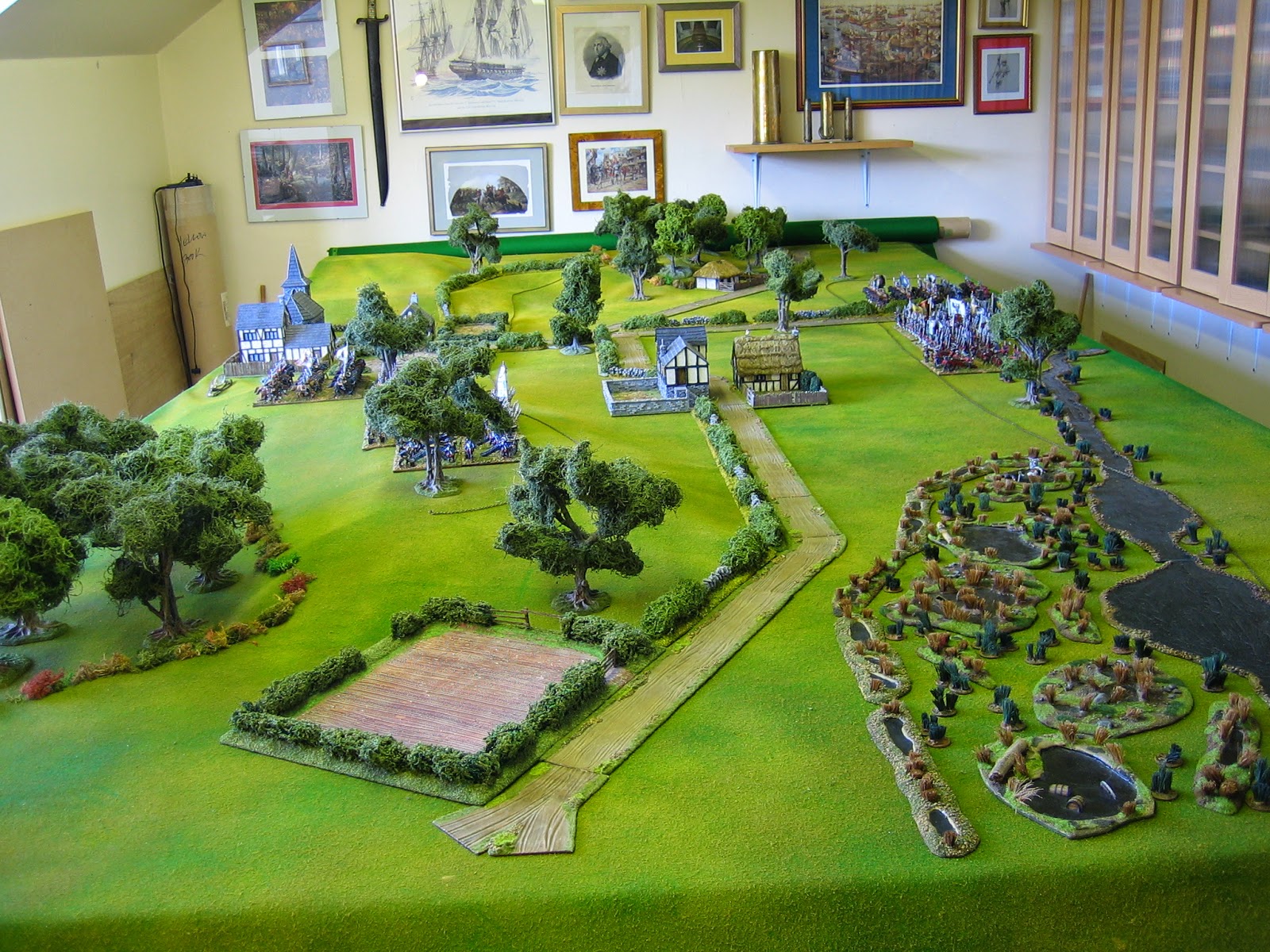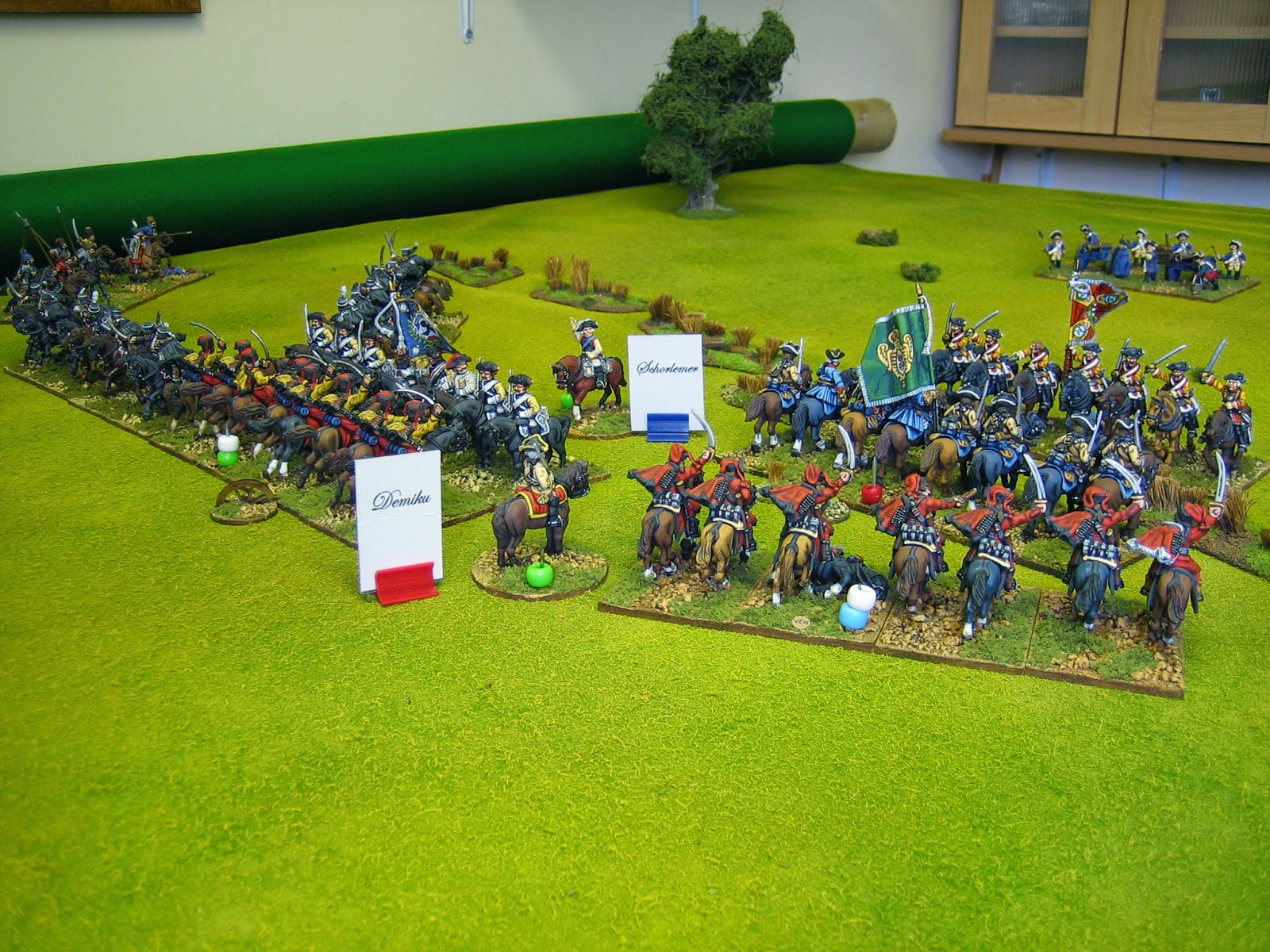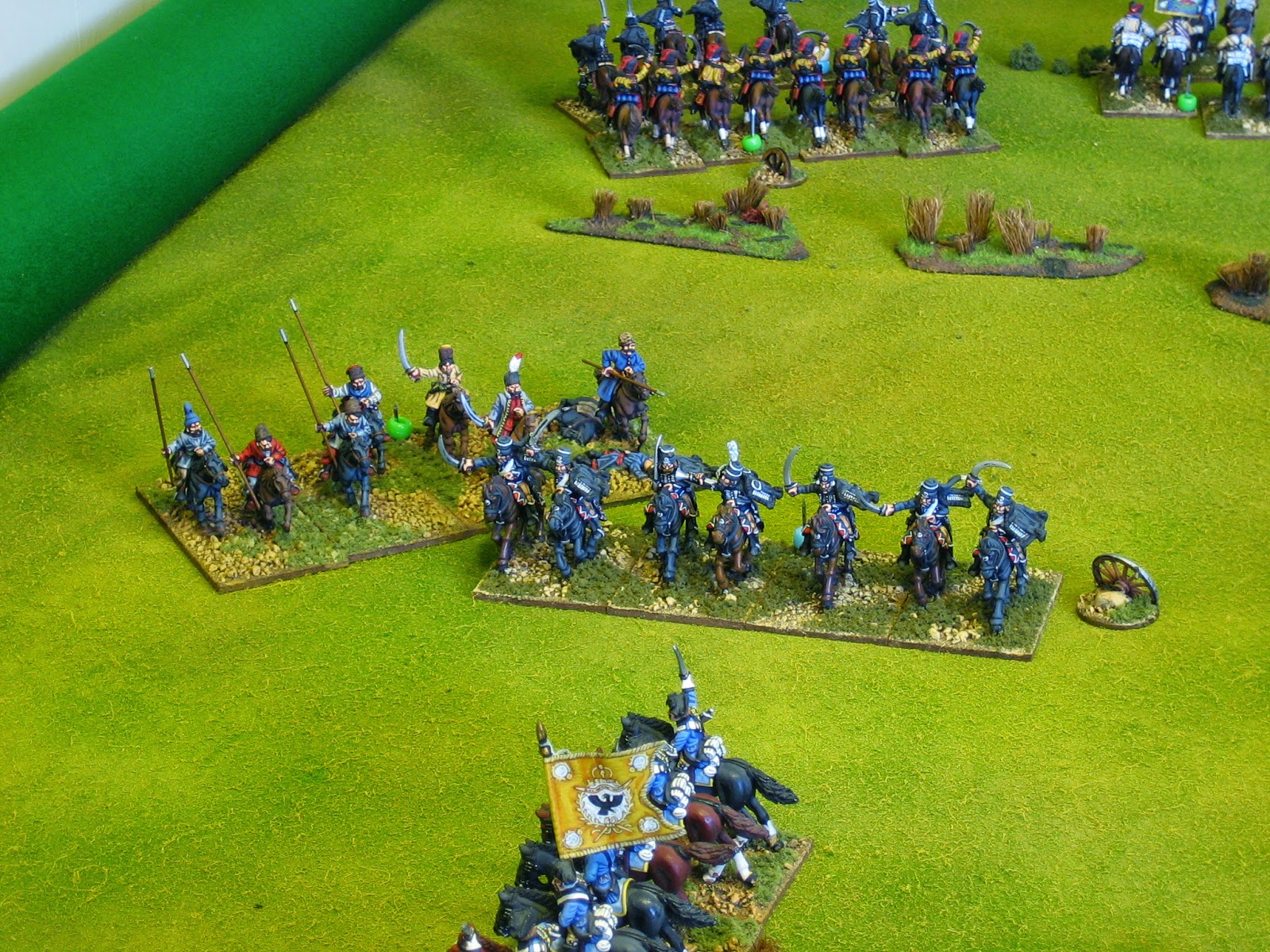Fictional Background
Following the disastrous encounters of 1759 Prussia is on the back foot and the strategic initiative has passed to the Russians. The Russians have decided to end the war by capturing Berlin, advancing on it from the south east. Progress has been steady and the Prussians have fallen back before the Russian's without risking an engagement.
Now, the only natural barrier between the Russians and their prize is the River Spree. The Russians have decided to force a crossing at Rasmandorf where the crossing points are dominated by the heights on the east bank. The Prussians, having traded ground for time to reinforce themselves, have taken up positions on the heights; it is here the Prussians will make their stand.
If the Russians can take the heights any attempted defence of the far bank will be rendered futile, they will be able to cross without further resistance, and Berlin, along with the House of Hohenzollern, will fall.
The Fictional Battlefield
All terrain, except isolated trees (added for aesthetic reasons), is representative terrain.
- The stream and boggy ground are type III terrain.
- Built up areas are type III 'town sections'. The Church is a two piece feature split lengthwise (one 'town section' on each side).
- The hills have type II slopes with level tops.
- Woods on level ground are type II. Wooded slopes are type III.
- Hedges are type II. Enclosed fields are type II (the 12 feet of hedges, as well as a dozen 6" tall trees, are new Christmas additions to the terrain collection - they are by Andy Worsley of The Last Valley, though I did a little extra work on the hedges to make them fit in).
Each player will choose an order of battle using a basic force plus one 'package' chosen from his list. Deployments will be made secretly on the map after the 'Army Characterisation Deck' draw (6 cards for each player) and prior to table deployment.
Both players may choose to deploy some of their force as a single off-table reserve. If this option is taken, the Russian baseline entry point must be marked on the map, Prussian reinforcements must arrive through the town (via Rasmandorf's off table bridges). Their activation and imminent entry point may be announced when the player's Major Morale card is turned. Thereafter, they move onto the table in march column on any appropriate move card.
Note: The scale on the map is in 6 cm increments and a unit in line has a frontage of 18 cm.
Note: Any routing Prussian troops will seek to escape via the bridges behind Rasmandorf or, if cut off from them, towards one of the table ends.
Note: The full range of Stratagem card definitions will be active for this scenario. If the Prussians draw a reinforcements right / left stratagem it will be assumed that they are arriving via a secretly constructed pontoon bridge in that sector.
 |
| Map note: The River Spree is off table behind the Prussian deployment area (top of map) - the on table watercourse is just a stream. |
Victory Conditions
The victory conditions are simple enough and they are the same for both players.
- Marginal Victory: Be in sole possession of one hill and the road exit in the Russian deployment zone at the end of turn six (nightfall).
- Decisive Victory: Be in sole possession of both hills at the end of turn six (nightfall).
- Total Victory: Be in sole possession of both hills and the road exit in the Russian deployment zone at the end of turn six (nightfall).
Prussian Order of Battle
 |
| Basic Prussian Force |
- 1 Regiment of Cuirassier.
- 1 Regiment of Dragoons.
- 1 Regiment of Hussars.
- 2 units (four battalions) of Combined Grenadiers.
- 5 Regiments of Musketeers.
- 2 batteries of Artillery.
- 1 Regiment of Dragoons
- 1 unit (two battalions) of Combined Grenadiers
- 2 Regiments of Fusiliers
- 1 Regiment of Garrison Infantry
- 1 Battery of Artillery.
Package B
- 1 Regiment of Dragoons
- 2 Regiments of Hussars
- 1 Regiment of Fusiliers
- 2 Batteries of Heavy Artillery (in redoubts)
Package C
- 1 Regiment of Cuirassier
- 1 Regiment of Hussars
- 2 Regiments of Musketeers
- 1 Regiment of Fusiliers
- 1 Battery of Artillery
Russian Order of Battle
Basic Force
- 2 Regiments of Cuirassier
- 1 Regiment of Horse Grenadiers
- 2 Regiments of Hussars
- 3 Regiments of Grenadiers
- 6 Regiments of Musketeers
- 2 Batteries of Artillery
Package A
Package C
- 1 Regiment of Horse Grenadiers
- 2 Regiment of Cossacks
- 1 Regiment of Grenadiers
- 4 Regiments of Musketeers
- 1 Battery of Artillery
Package B
- 1 Regiments of Cuirassier
- 2 Regiment of Dragoons
- 1 Regiment of Grenadiers
- 2 Regiments of Musketeers
- 2 Batteries of Heavy Artillery
- 4 Regiments of Cossacks
- 2 units (four battalions) of Combined Grenadiers
- 4 Regiments of Musketeers
I think this scenario will be fought in two to three weeks time. The last two gaming nights have been cancelled due to the weather; I'm hoping we can get Graham's game in over the next week or two, then get this one going.
























































